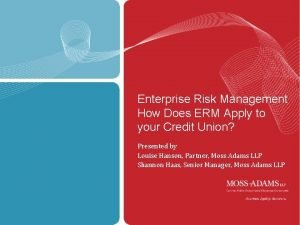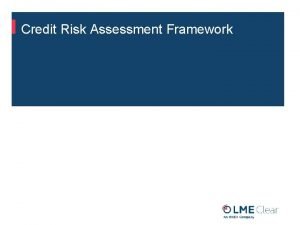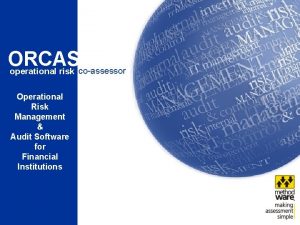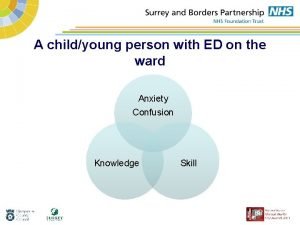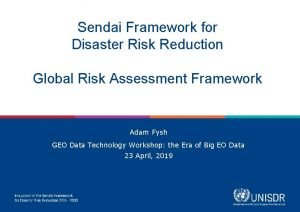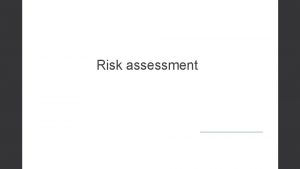Credit Risk Assessment Framework Credit Risk Assessment Framework





- Slides: 5

Credit Risk Assessment Framework

Credit Risk Assessment Framework A consistent, transparent and dynamic approach driven by LME Clear’s credit judgement to 1) Assess, 2) Quantify and 3) Monitor, the level of credit risk LMEC is materially exposed to from each counterparty it deals with. The assessment framework will drive member limit setting, collateral and investment decisions, with the goal to prevent credit loss. 2

Credit Scorecard Model Process Economic Risk Industry Risk Financial Risk Qualitative Overlay Credit Score Credit Rating 3

Credit Analyst Review • Rationalise counterparty risk against relationship type • Identify Counterparty Specific Key Risks • Justify model factors and confirm credit rating from scorecard • Provides a full audit trail of the credit assessment process and decision Key Risks/Ratings/Relationship Strategy Counterparty Profile • Exposure - Rationalise and Recommendation. • Group/Counterparty Description – Legal Structure. • Assessment of key Risks – Likelihood and Impact rating for each identified risk, EWI Monitoring • Sector Exposure – Sector risks. • Peer Group – Relative analysis , business position. • Rating Profile – Rating history and trend. • WWR – Identify wrong way risk it present. • LME Relationship – Strategy and Products. Financial Analysis Sensitivity/Stress Scenario • Profitability/ Cash Generation – Assessment of financials. • Forecast financials under counterparty specific stress Assess vulnerability to firm specific risks. • Asset Quality – Assessment of asset quality • Capitalisation/Liquidity – Assessment of capital and liquidity position. • Forecast financials under macro stress - Assess vulnerability to macro risks. Final Credit Rating/LME Credit Rating Bands 4

Early Warning Indicators (EWI) Identify and monitor credit deterioration for both public and private counterparties based on real time market information Market Indicators Public companies 1. 2. 3. Private companies External Rating Agency Downgrades Market data: CDS prices Expected Default Frequency (Moody’s EDF) Firm Specific Factors. 1. 2. External Rating Agency Downgrades Firm Specific Factors - Market factors identified in the credit analyst review to be highly correlated to the credit performance of individual counterparties. Data sourced from Moody’s KMV (EDF), Markit (CDS), Bloomberg (Other Market Data), External Rating Agencies Internal EWI Model Calibration Credit Cycle Time Series Analysis Determine the appropriateness of each market instrument as a measure of credit quality. Optimisation Sensitivity Analysis Set EWI triggers to generate the optimal level of warnings with the least amount of “false alarms” Calibrate to our portfolio characteristics and ensure effectiveness. 5

